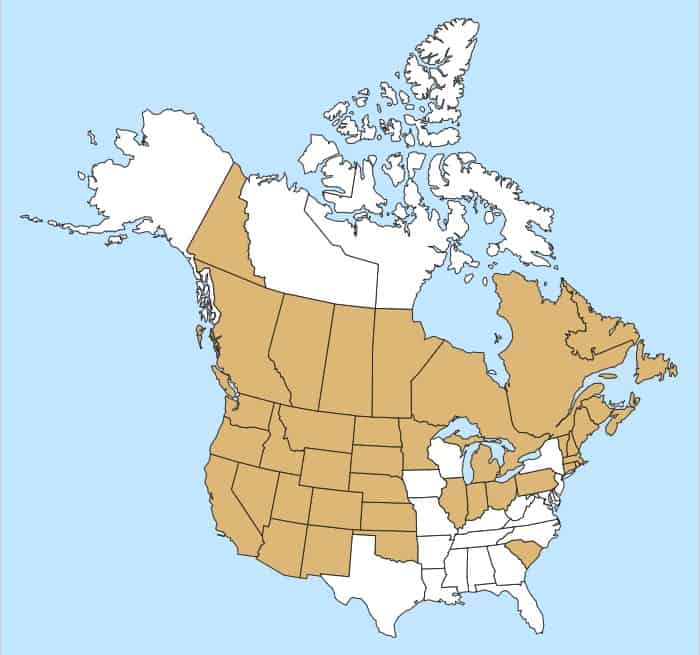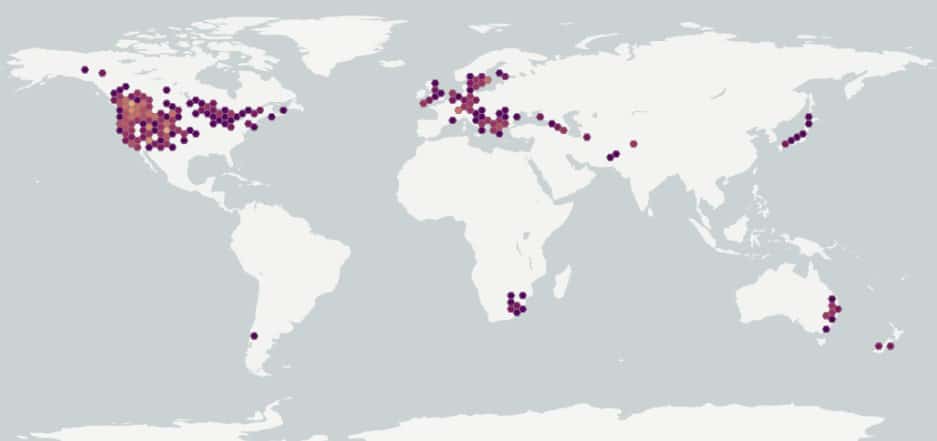Linaria dalmatica
Overview
Aperçu
Regulation :
Remarques Réglementation:
- CFIA Weed Seeds Order - Class 2: Primary Noxious Weed Seeds
- USA Federal Noxious Weed Seed List
Regulation Notes:
Distribution :
Répartition :
Linaria dalmatica is native to southeastern Europe and western Asia (Vujnovic and Wein 1997; USDA-ARS 2022). Introduced in North America, Argentina, South Africa, India, Australia, and beyond its native range in Europe (Austria, Belgium, Germany, Hungary, Italy, Norway, Switzerland and the United Kingdom) (CABI 2022). Occurs across Canada except for Nunavut, Northwest Territories, and Prince Edward Island (Brouillet et al. 2010+). It is noted as ephemeral in Newfoundland and Yukon.
Habitat and Crop Association :
Habitat et Cultures Associées :
Prefers coarse-textured soils in old fields, pastures, gardens, vineyards, forest plantations, roadsides, railway lines and other disturbed areas (Darbyshire 2003; CABI 2022). Persists in Medicago sativa (alfalfa) and summer fallow in North America (Vujnovic and Wein 1997). Invades sagebrush (Artemisia tridentata) and ponderosa pine (Pinus ponderosa) communities in the western United States (Vujnovic and Wein 1997). This species thrives in disturbed, coarse soils in semi-arid, cool climates (Sing et al. 2016).
Economic Use, cultivation area, and Weed Association :
Utilisation économique, zone de culture et association de mauvaises herbes :
Duration of Life Cycle :
Durée du cycle vital:
Perennial
Dispersal Unit Type :
Type d’unité de dispersion :
Seed
General Information
RENSEIGNEMENTS GÉNÉRAUX
Linaria dalmatica was introduced into North America in the late 19th century as an ornamental (Vujnovic and Wein 1997), and disposal of garden plants is believed to be the main source of invasion into other disturbed areas (CABI 2022).
The species can reproduce through both seeds and by sprouting from underground roots. Seed capsules are estimated to contain 60-300 seeds (Sing et al. 2016). A plant with 12-15 stems has been estimated to produce up to 400,000 seeds (Vujnovic and Wein 1997). Seeds fall from the open capsules, near the parent plant, and can be dispersed further by wind and grazing mammals (Vujnovic and Wein 1997).
Seeds were found to have strong dormancy when freshly shed, germination increased for 5-6 weeks after dispersal (Vujnovic and Wein 1997). Seeds remained viable for up to 10 years when stored in field conditions (Vujnovic and Wein 1997).
L. dalmatica plants can grow shoots from underground, lateral shoots, and these clonal plants can give a competitive advantage, especially since the patch is generally avoided by grazers (Vujnovic and Wein 1997). Plants can sprout from rhizomes that extend up to 3 meters away, and from root fragments as small as 1 cm (Sing et al. 2016). Individual plants generally live for 4 years, and clonal patches of 1.5 metres have been measured (Vujnovic and Wein 1997).
This species can form fertile hybrids with L. vulgaris (named L. x hybrida Schur) and these hybrids have been found in five states in the western United States (FNA 1993+; Sing et al. 2016). Leaf, flower and seed features of these hybrids may favour one of the parent species, or be intermediate between the species (Sing et al. 2016). There are also reported hybrids with L. genistifolia in a laboratory setting (Vujnovic and Wein 1997).
.
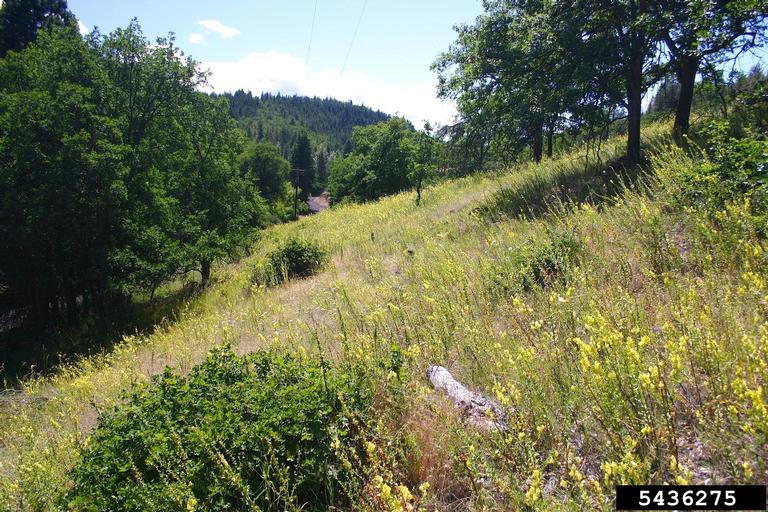
Linaria dalmatica infestation (Eric Coombs, Oregon Department of Agriculture, Bugwood.org)
Identification
Identification
-
Capsule
Size
- Capsule length: 4-10 mm; width: 4-8 mm (FNA 1993+, Vujnovic and Wein 1997)
- Capsule length: 0.5 – 1.0 cm; width 0.5 – 0.75 cm (Sing et al. 2016)
Shape
- Capsule is globose or oval shaped (Vujnovic and Wein 1997)
Surface Texture
- Capsule surface is smooth
Colour
- Capsule is straw-yellow coloured
-
Seed
Size
- Seed length*: 1.1 – 1.6 mm; width: 0.7 -1.1 mm
*Note: minimum and maximum of 10 seeds in a normal range of this species using image measurement (ISMA 2020)
From additional sources:
- Seed length: 1– 2 mm; width: 0.8 -1.6 mm (FNA 1993+)
- Seed width: 0.7 -1.3 mm (Vujnovic and Wein 1997)
Shape
- Seeds polygonal with generally three or four sides, they appear oval, wedge-shaped, trigonous or D-shaped in 2 dimensions
Surface Texture
- Seed faces densely covered with irregular ridges
Colour
- Seeds are shiny black or dark brown coloured
- Seeds generally have metallic brown reflection under bright lights
- Immature seeds are greyish white to yellowish white
Other Features
Hilum and hilum area
- Hilum is visible as a small, oval-shaped opening along one of the seed edges
Other than hilum
- The seed edges are sharp and striated, generally 0.2 mm wide*
*Note: minimum and maximum of 5 seeds in a normal range of this species using specimen measurement (ISMA 2020)
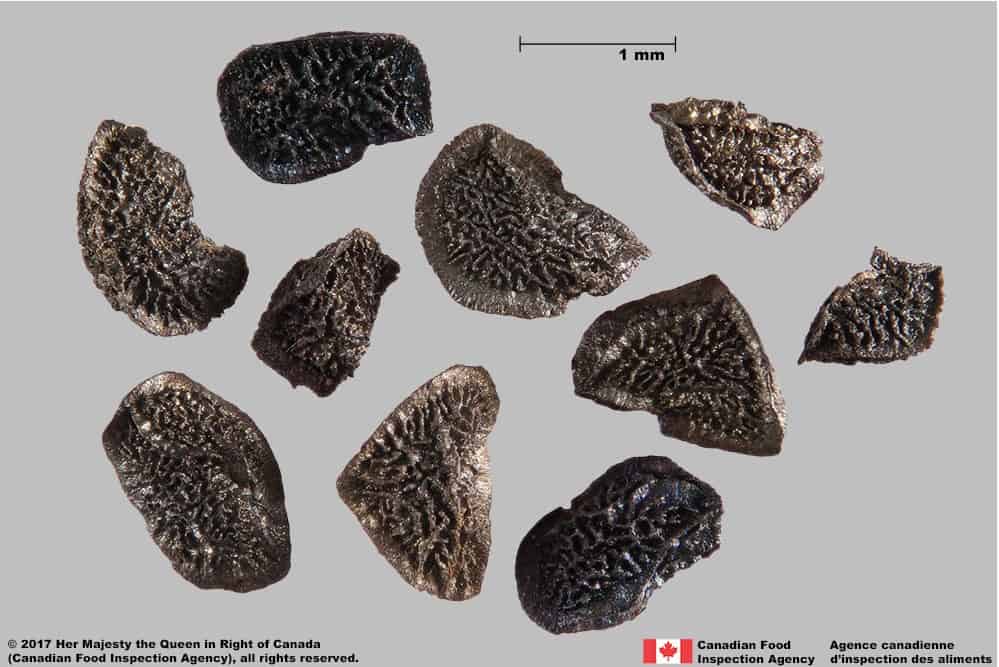
Dalmatian toadflax (Linaria dalmatica) seeds

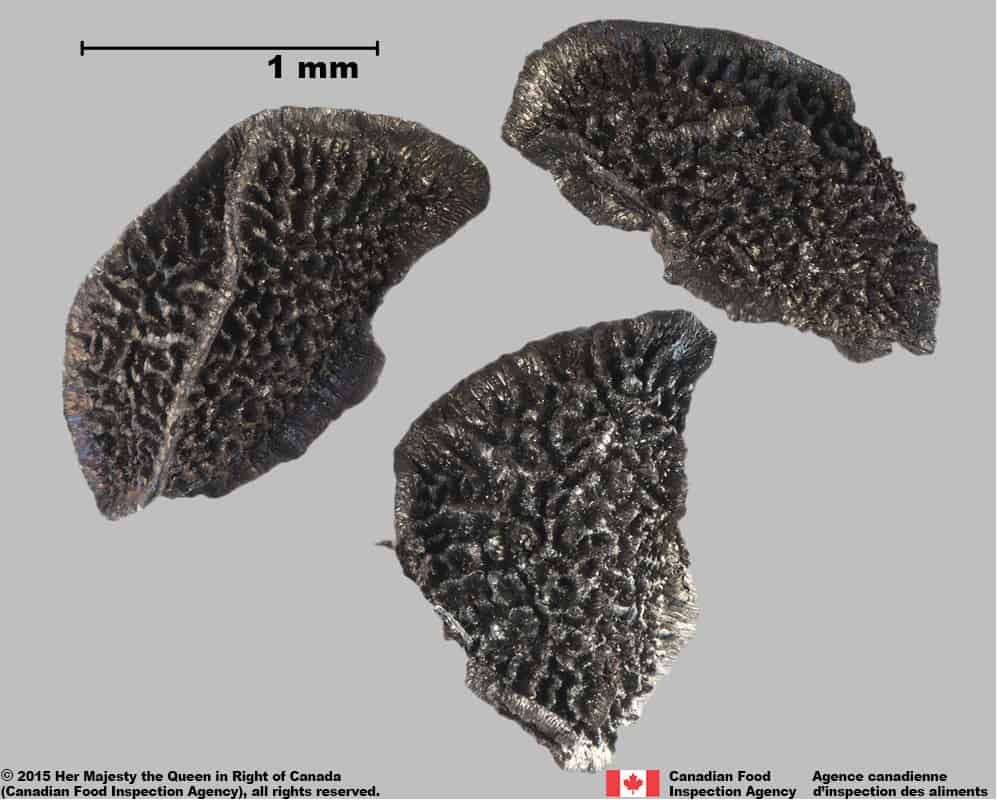
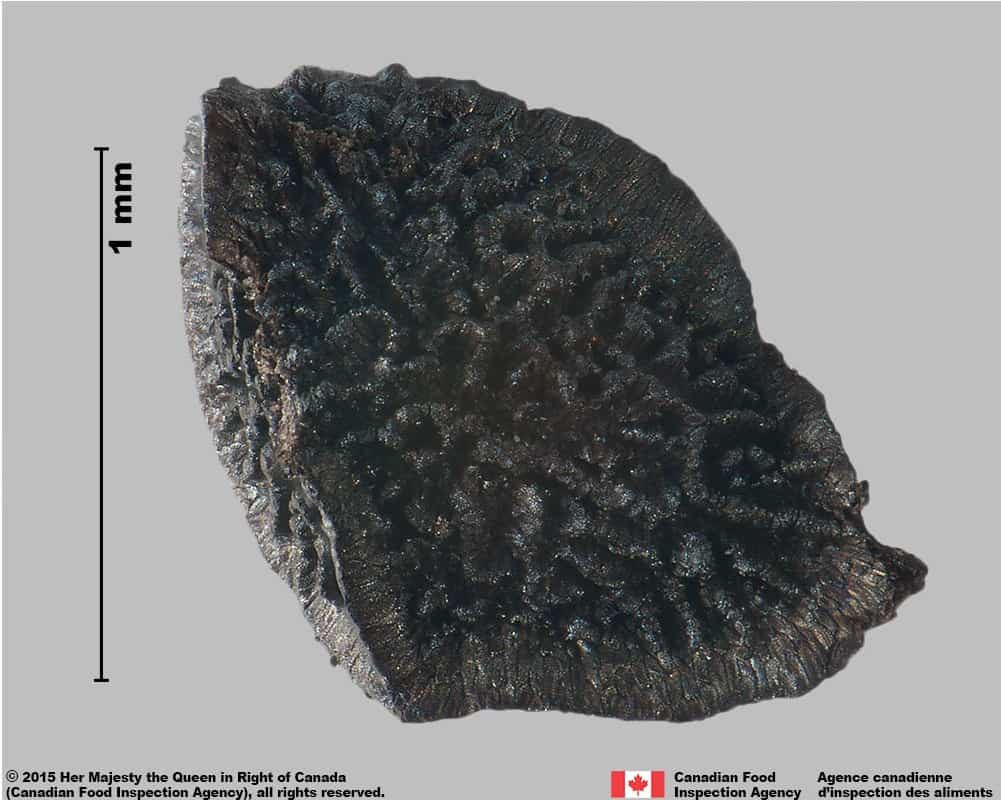
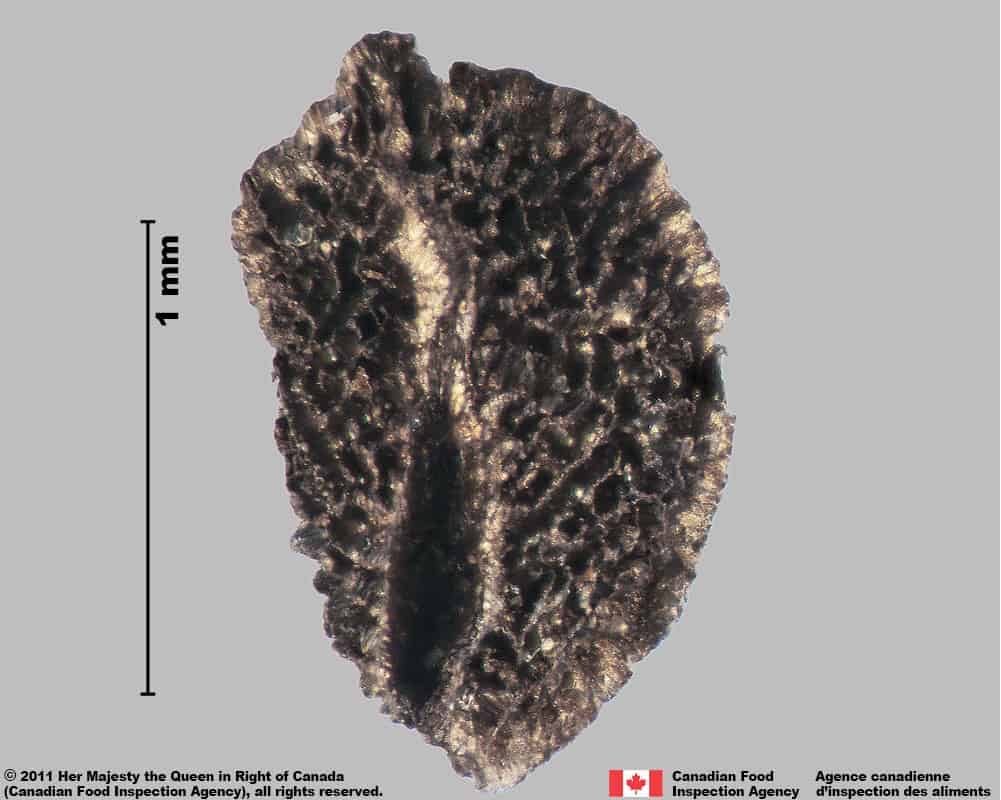
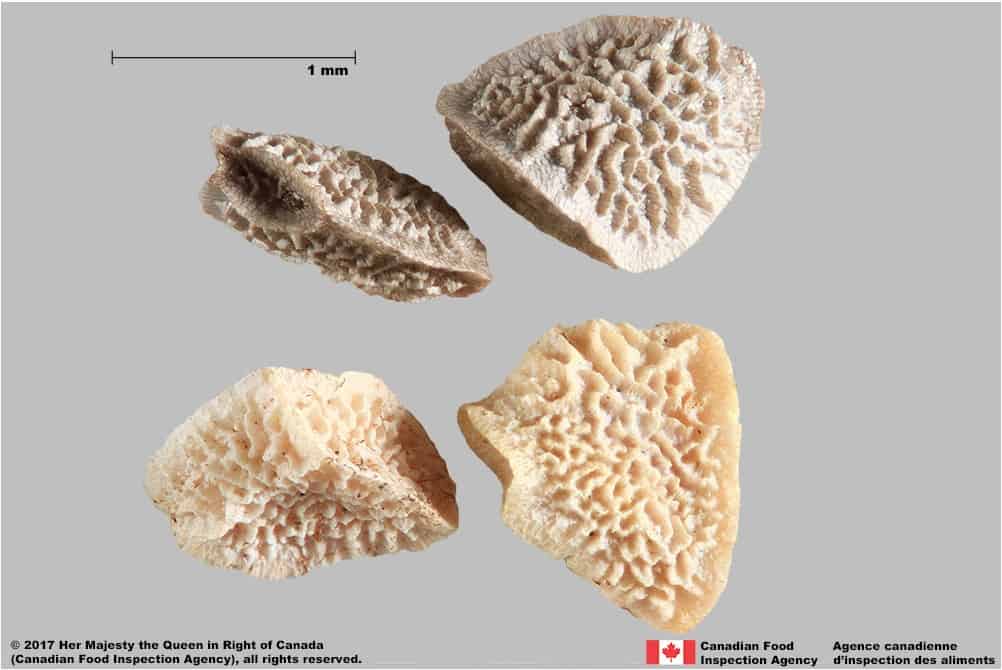
-
Embryo
Size
- Embryo partially fills the seed
Shape
- Embryo is linear shaped (Martin 1946)
Endosperm
- Endosperm is oily and translucent grey coloured
Other Features
- Embryo in an axial position
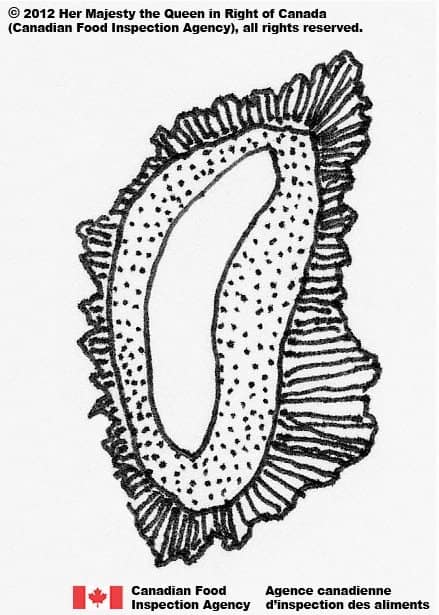
Dalmatian toadflax (Linaria dalmatica) seed, cross-section

Identification Tips
CONSEILS POUR L’IDENTIFICATION
The seeds of Linaria species are generally black or dark brown coloured with a metallic reflection, small sized, and round or polygonal shaped. L. dalmatica seeds are polygonal shaped along with similar shaped species such as L. repens, L. purpurea and L. genistifolia. Seeds of L. dalmatica are distinguished by the straight edges of the seed, a metallic reflection, and the ridges on the flat faces generally more dense with smaller interspaces than similar species. Similar species of Linaria also are dull coloured, have curved edges or larger interspaces compared to L. dalmatica seeds.

Dalmatian toadflax (Linaria dalmatica) seed




Additional Botany Information
AUTRES RENSEIGNEMENTS BOTANIQUES
Flowers/Inflorescence
- Flowers are generally light yellow, a few are yellow or white
- Flower length: 28 – 49 mm (FNA 1993+)
- Each flower has a narrow conical, nectar containing spur length: 11-30 mm (FNA 1993+)
Vegetative Features
- Plants can reproduce vegetatively from rhizomes that can extend up to 3 meters away (Sing et al. 2016)
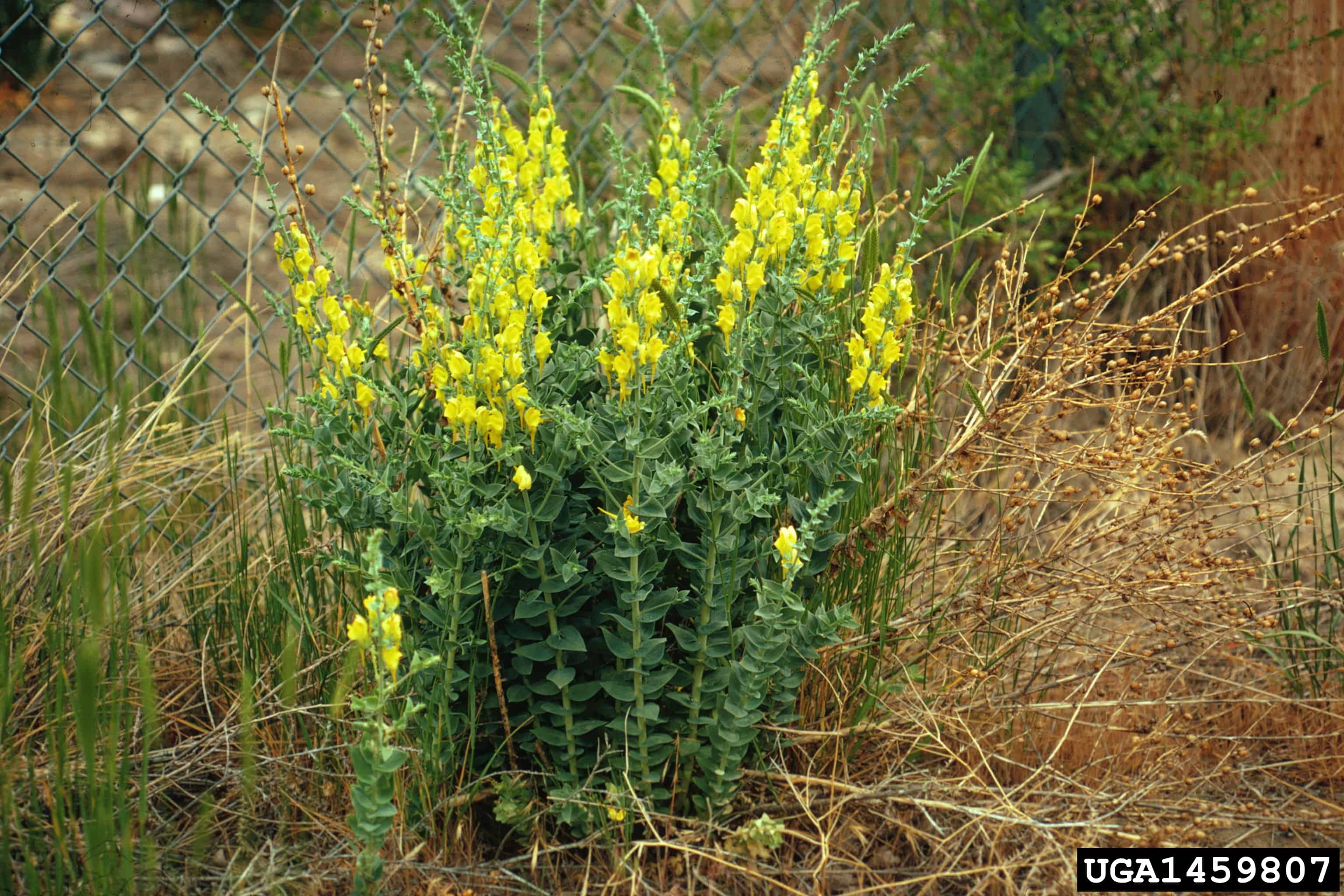
Linaria dalmatica plant (Utah State University, Bugwood.org)

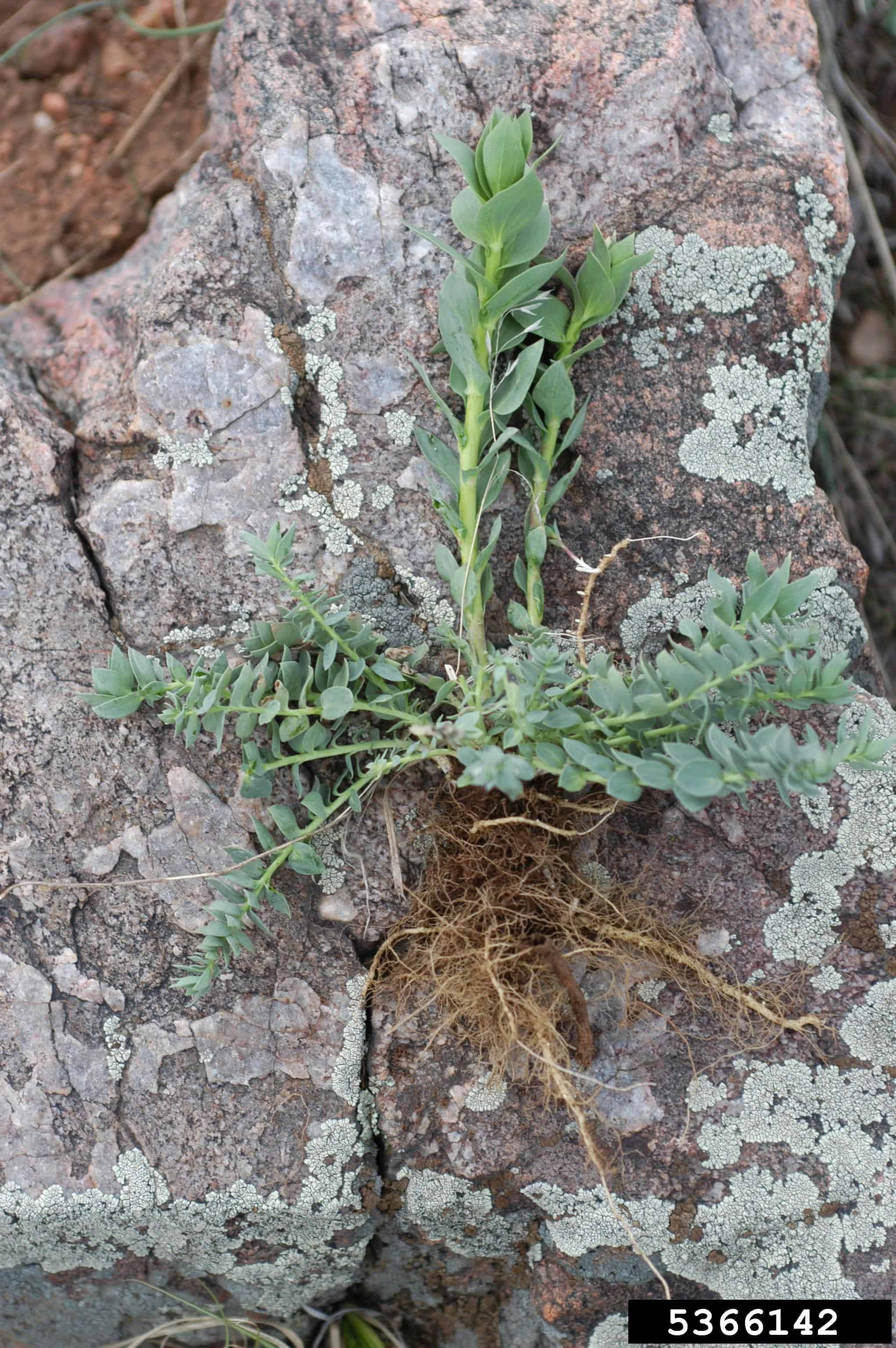
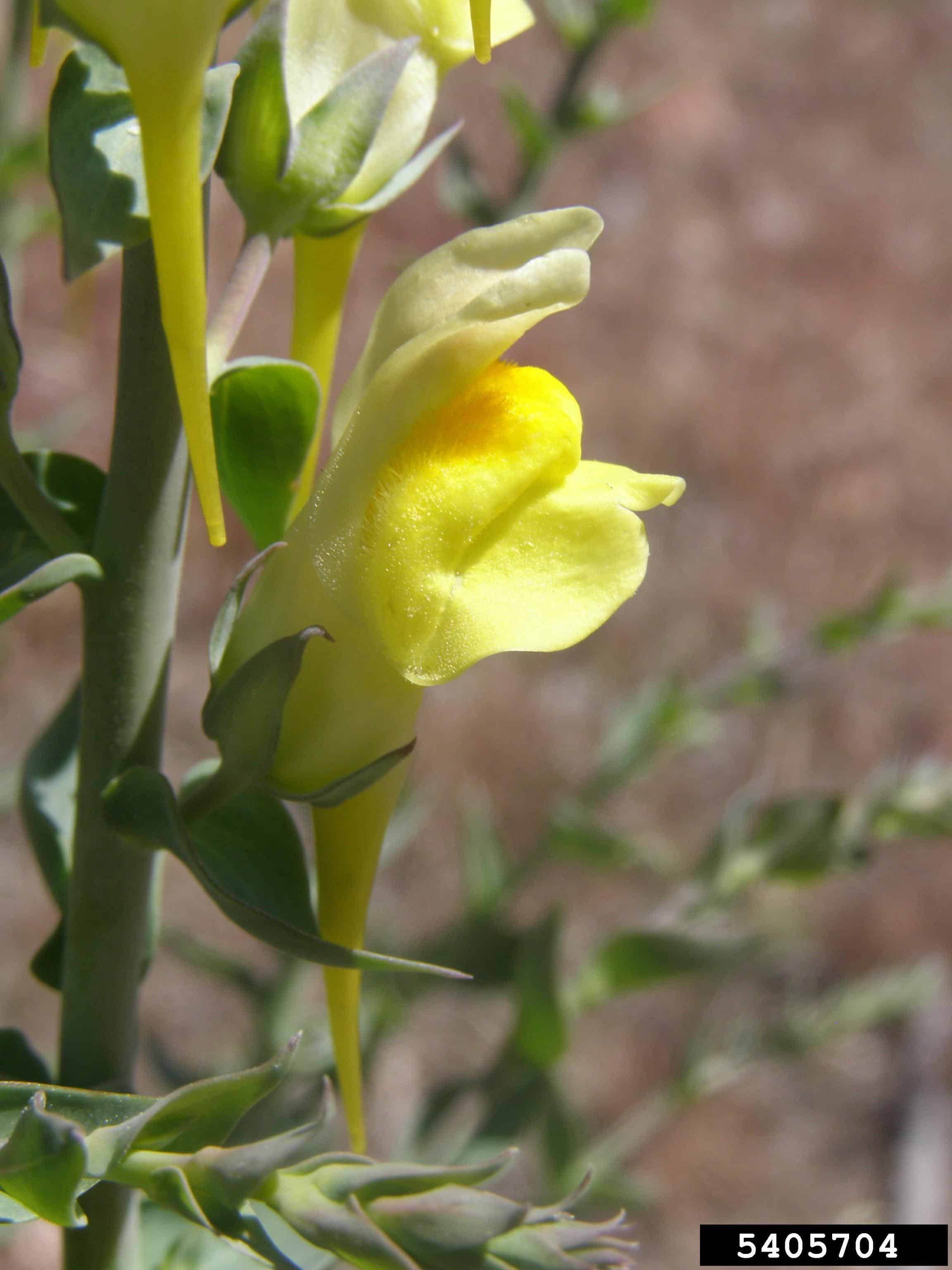
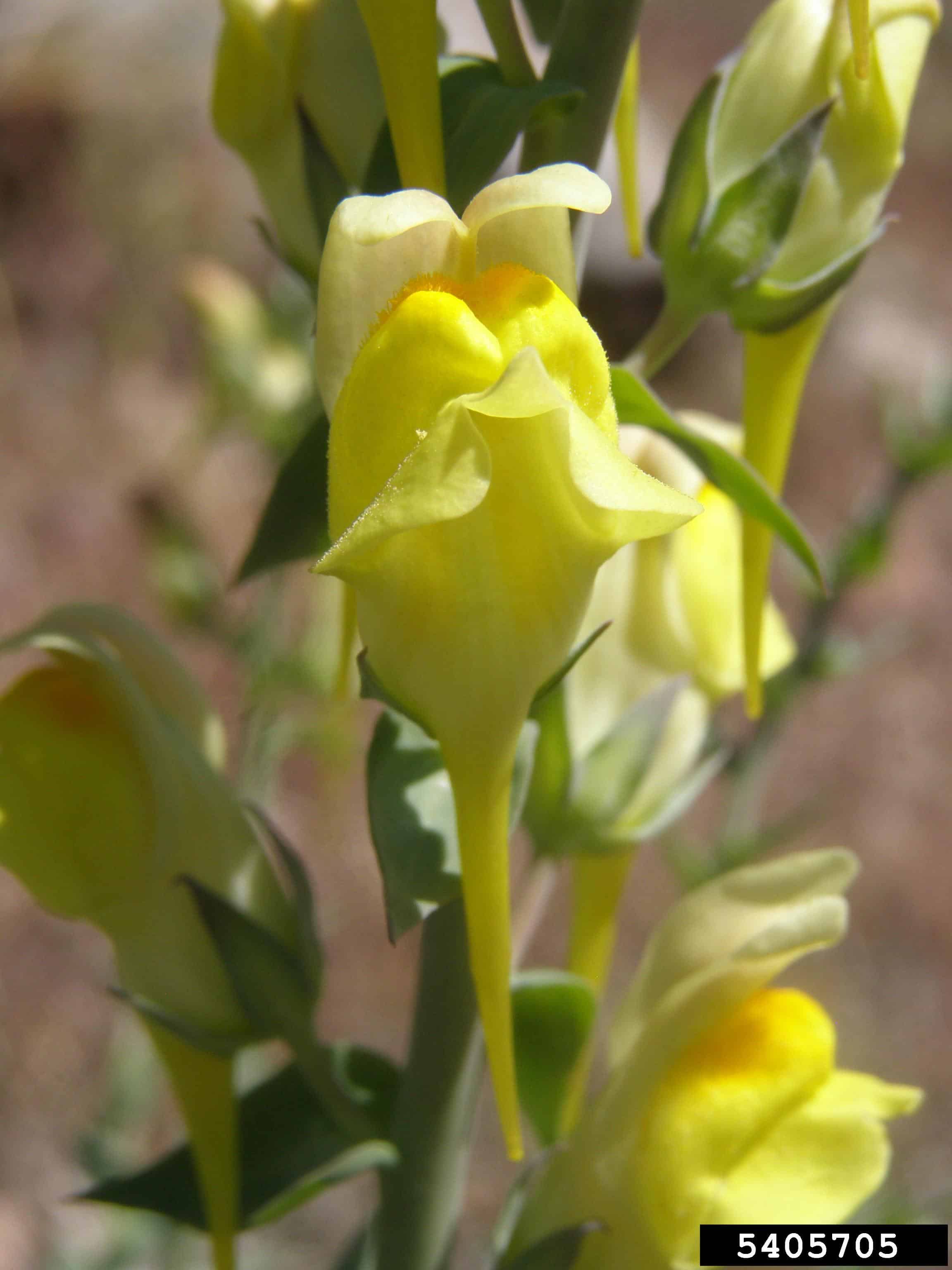
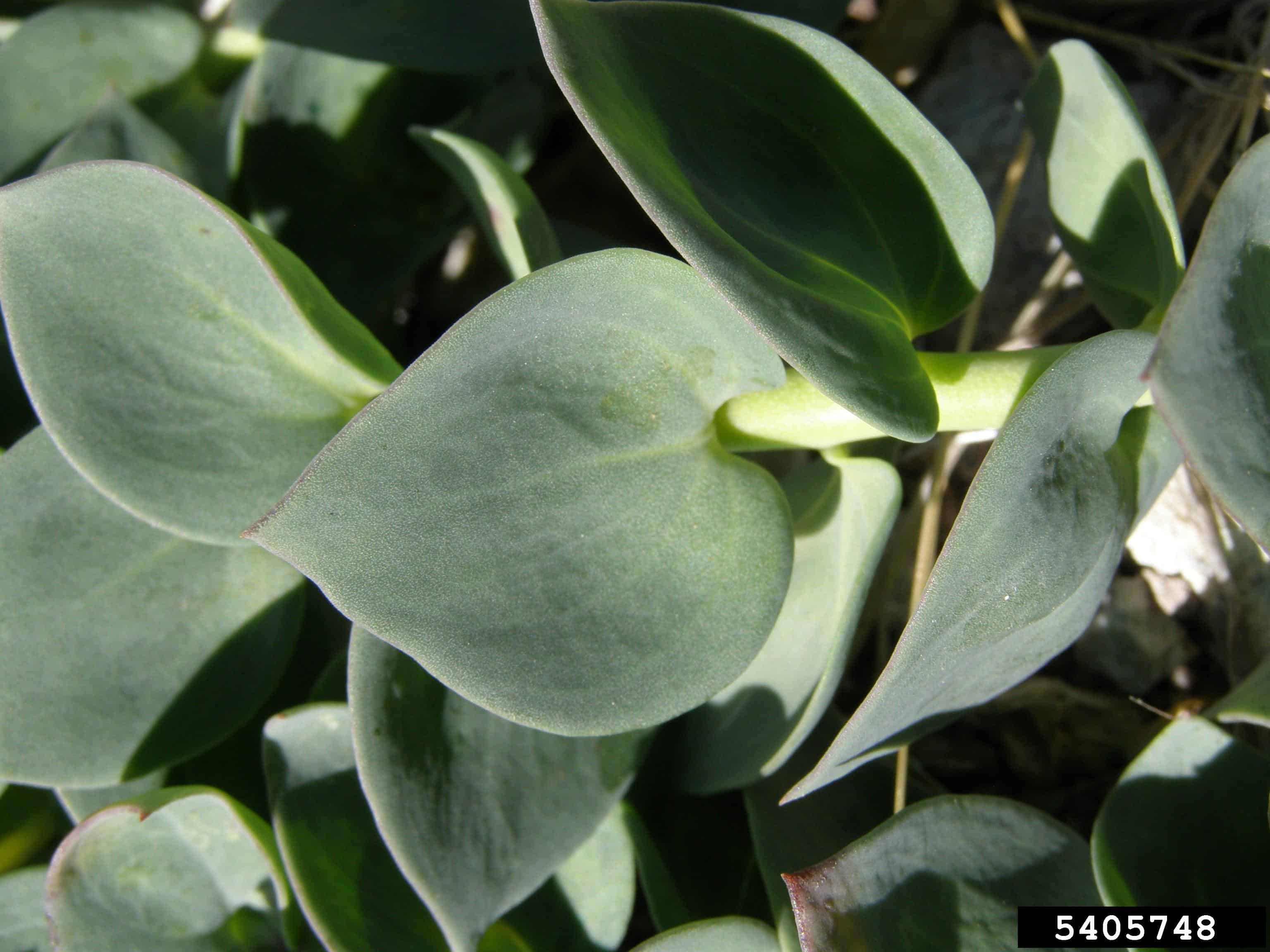
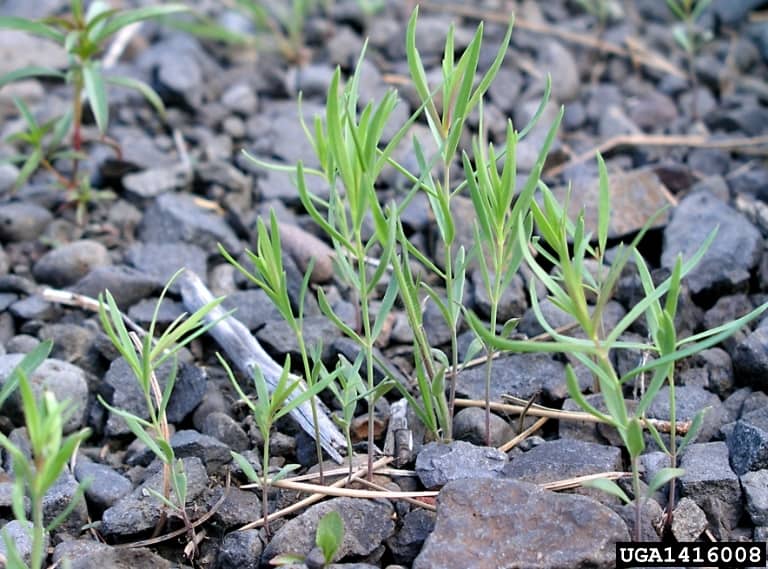
Similar Species
ESPÈCES SEMBLABLES
Similar species are based on a study of seed morphology of various species, and those with similar dispersal units are identified. The study is limited by physical specimen and literature availability at the time of examination, and possibly impacted by the subjectivity of the authors based on their knowledge and experience. Providing similar species information for seed identification is to make users aware of similarities that could possibly result in misidentification.
Linaria genistifolia (L.) Mill. (broomleaf toadflax)
L. genistifolia seeds are generally smaller (length*: 0.6 – 0.8 mm; width: 0.4 – 0.5 mm) may be a shiny black colour, generally with a blue metallic reflection under bright lights. One end of the seed is generally tapered, the irregular ridges have larger interspaces and the edges have a microscopic reticulate pattern compared to L. dalmatica seeds.
Linaria repens (L.) Mill. (striped toadflax)
L. repens seeds are a similar size (length*: 0.9 – 1.6 mm; width: 0.7 – 1.0 mm) to L. dalmatica seeds, but have one curved edge, appear almost three-sided, lack winged edges, and are generally dull dark brown.
*Note: minimum and maximum of 10 seeds in a normal range of this species using image measurement (ISMA 2020)
Click to select species
Cliquez pour sélectionner les espèces
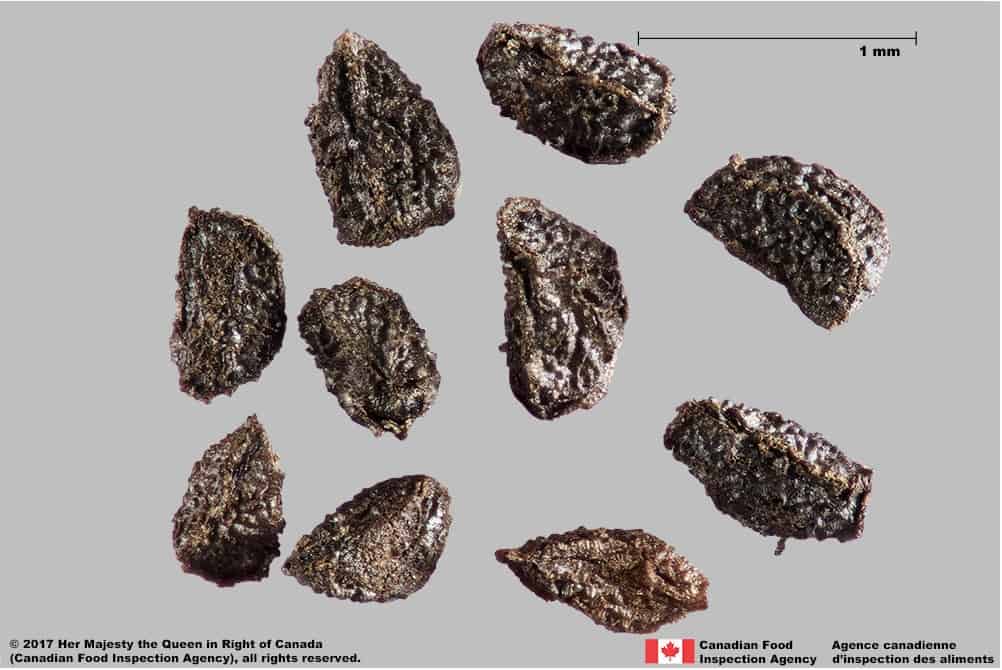
Linaria genistifolia
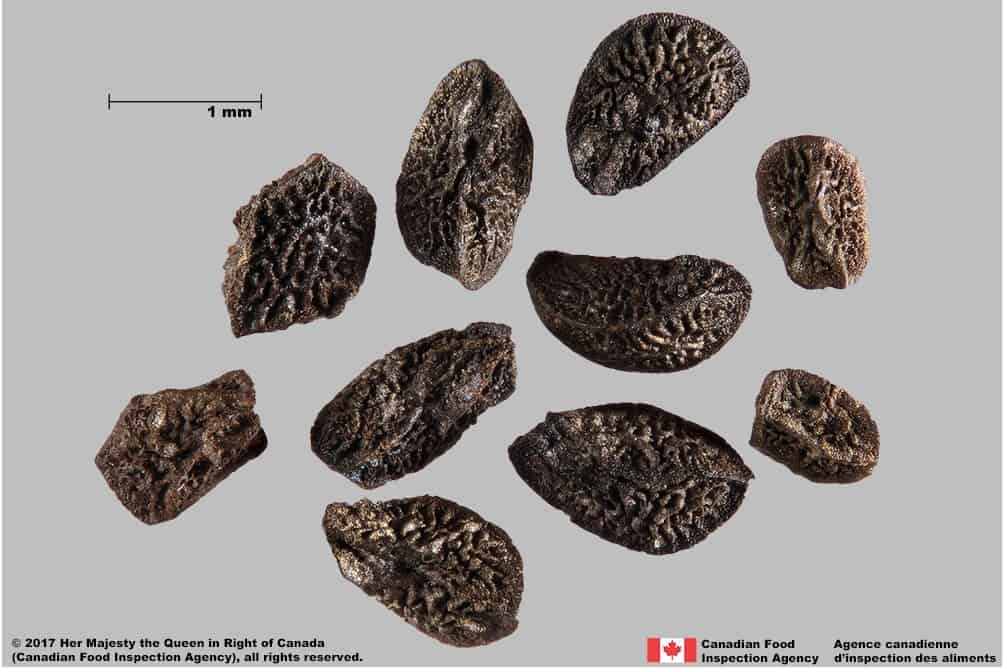
Linaria repens
Comparison Window
Fenêtre de comparaison
MAIN SPECIES
ESPÈCES PRINCIPALES
Linaria dalmatica

Linaria dalmatica
Plantaginaceae
Dalmatian toadflax (Linaria dalmatica) seeds
MAIN SPECIES
ESPÈCES PRINCIPALES
Linaria dalmatica

Linaria dalmatica
Plantaginaceae
Dalmatian toadflax (Linaria dalmatica) seeds
MAIN SPECIES
ESPÈCES PRINCIPALES
Linaria dalmatica

Linaria dalmatica
Plantaginaceae
Dalmatian toadflax (Linaria dalmatica) seed
MAIN SPECIES
ESPÈCES PRINCIPALES
Linaria dalmatica

Linaria dalmatica
Plantaginaceae
Dalmatian toadflax (Linaria dalmatica) seed showing bronze highlights
MAIN SPECIES
ESPÈCES PRINCIPALES
Linaria dalmatica

Linaria dalmatica
Plantaginaceae
Dalmatian toadflax (Linaria dalmatica) immature seeds
MAIN SPECIES
ESPÈCES PRINCIPALES
Linaria dalmatica

Linaria dalmatica
Plantaginaceae
Dalmatian toadflax (Linaria dalmatica) seed, cross-section
SIMILAR SPECIES
ESPÈCES SEMBLABLES
Linaria genistifolia

Linaria genistifolia
Plantaginaceae
Broomleaf toadflax (Linaria genistifolia) seeds
SIMILAR SPECIES
ESPÈCES SEMBLABLES
Linaria genistifolia
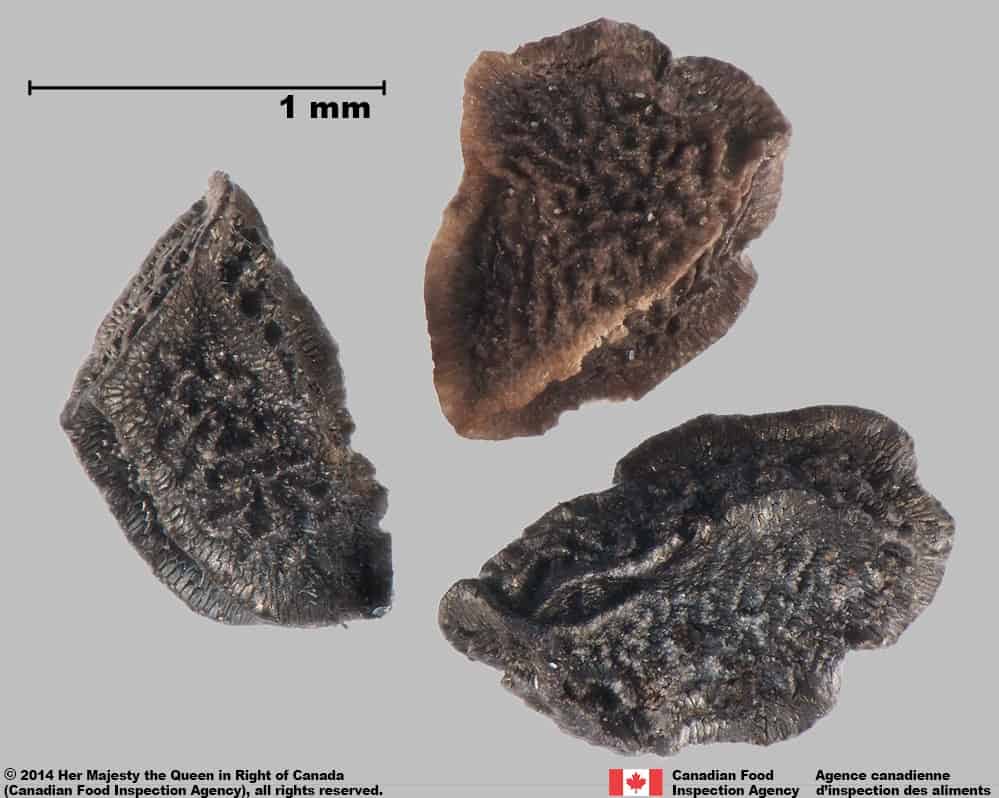
Linaria genistifolia
Plantaginaceae
Broomleaf toadflax (Linaria genistifolia) seeds
SIMILAR SPECIES
ESPÈCES SEMBLABLES
Linaria genistifolia
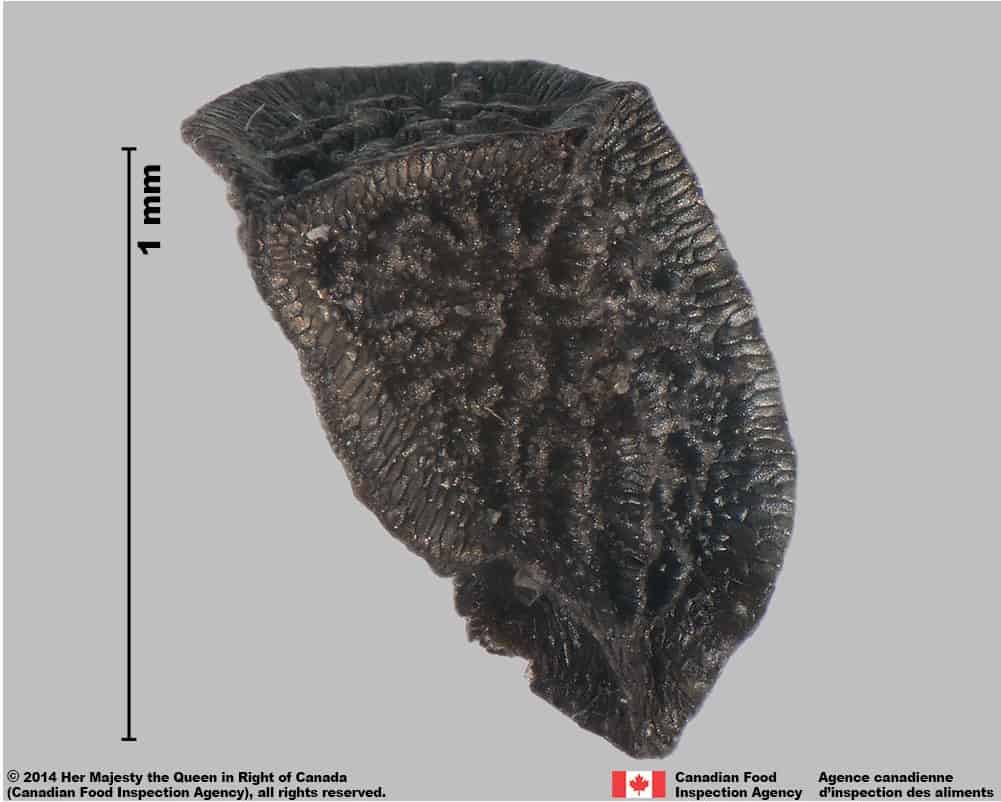
Linaria genistifolia
Plantaginaceae
Broomleaf toadflax (Linaria genistifolia) seed
SIMILAR SPECIES
ESPÈCES SEMBLABLES
Linaria genistifolia
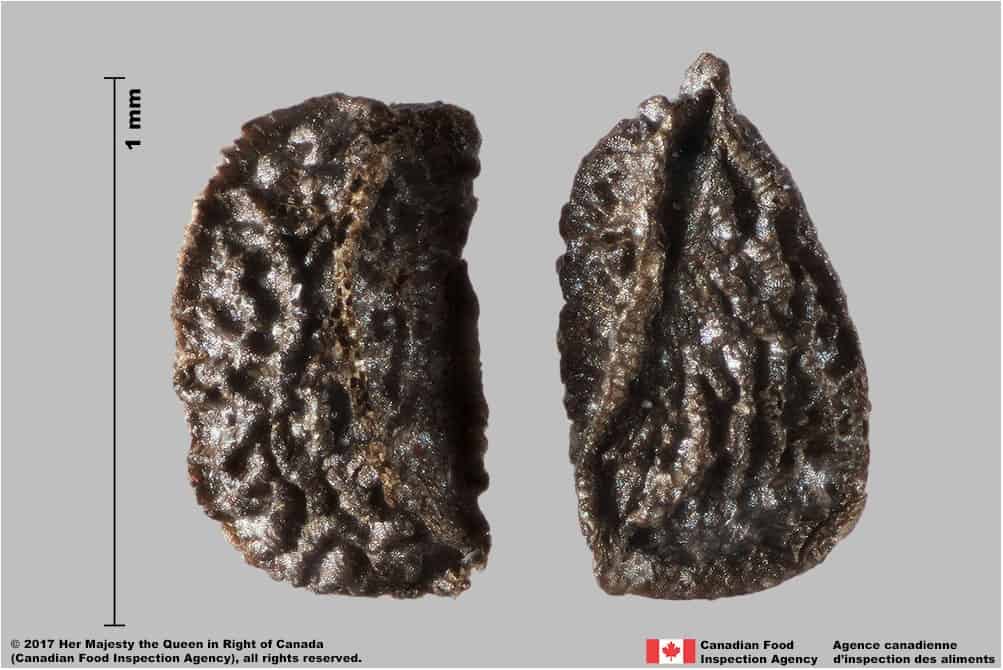
Linaria genistifolia
Plantaginaceae
Broomleaf toadflax (Linaria genistifolia) seeds
Need ID Help?
Besoin d’aide pour l’identification?
Reference(s)
Référence(s)
Brouillet, L., Coursol, F., Meades, S. J., Favreau, M., Anions, M., Bélisle, P. and Desmet, P. 2010+. VASCAN, the database of vascular plants of Canada. http://data.canadensys.net/vascan/ Accessed March 21, 2022.
Centre for Agriculture and Bioscience International (CABI). 2022. Invasive Species Compendium, CAB International, Wallingford, UK. https://www.cabidigitallibrary.org/journal/cabicompendium Accessed March 21, 2022.
Darbyshire, S. J. 2003. Inventory of Canadian Agricultural Weeds. Agriculture and Agri-Food Canada, Research Branch. Ottawa, ON.
Flora of North America (FNA) Editorial Committee, eds. 1993+. Flora of North America North of Mexico [Online]. 22+ vols. New York and Oxford. http://beta.floranorthamerica.org. Accessed December 29, 2022.
Global Biodiversity Information Facility (GBIF) Secretariat. 2022. https://doi.org/10.15468/39omei Accessed via https://www.gbif.org/species/5415011 Accessed December 29, 2022.
Government of Canada (GC). 2016. Canadian Weed Seeds Order. https://laws-lois.justice.gc.ca/eng/regulations/SOR-2016-93/page-2.html (English) https://laws-lois.justice.gc.ca/fra/reglements/DORS-2016-93/page-2.html (French)
International Seed Morphology Association (ISMA). 2020. Method for Seed Size Measurement. Version 1.0. ISMA Publication Guide.
Martin, A.C. 1946. The comparative internal morphology of seeds. The American Midland Naturalist 36: 513-660.
Plants of the World Online (POWO). 2022. Facilitated by the Royal Botanic Gardens, Kew. Published on the Internet; http://www.plantsoftheworldonline.org/ Accessed April 19, 2022.
Sing, S.E., De Clerck-Floate, R.A., Hansen, R.W., Pearce, H., Randall,C.B.,Toševski, I. and Ward, S.M. 2016. Biology and Biological Control of Yellow and Dalmatian Toadflax. 3rd Edition. U.S. Forest Service, Forest Health Technology Enterprise
Team Morgantown, WV. 141 pp.
Tropicos.org. 2022. Missouri Botanical Garden. https://tropicos.org Accessed April 19, 2022.
U.S. Department of Agriculture-Agricultural Research Services (USDA-ARS). 2022. Germplasm Resources Information Network (GRIN), https://npgsweb.ars-grin.gov/gringlobal/taxon/taxonomysimple.aspx Accessed April 19, 2022.
Vujnovic, K. and Wein, R. W. 1997. The biology of Canadian weeds. 106. Linaria dalmatica (L.) Mill. Canadian Journal of Plant Science 77: 483–491



